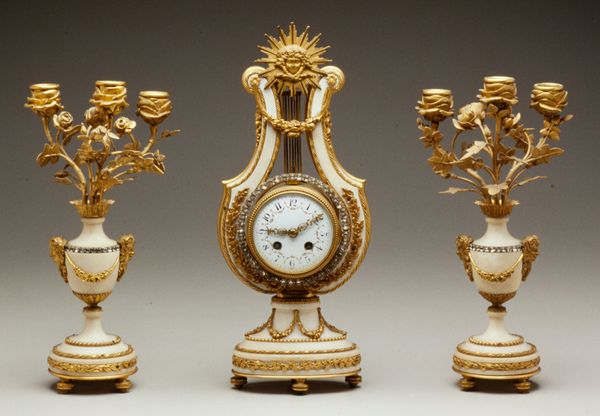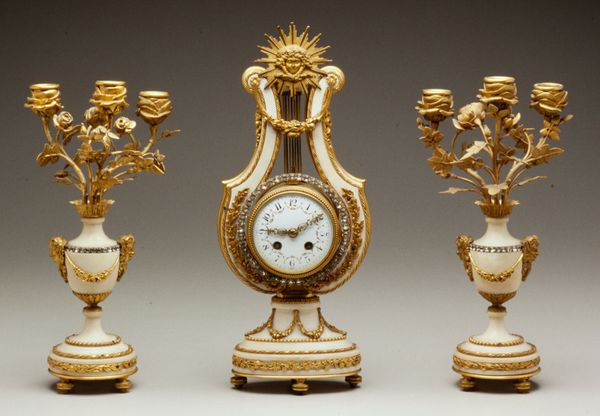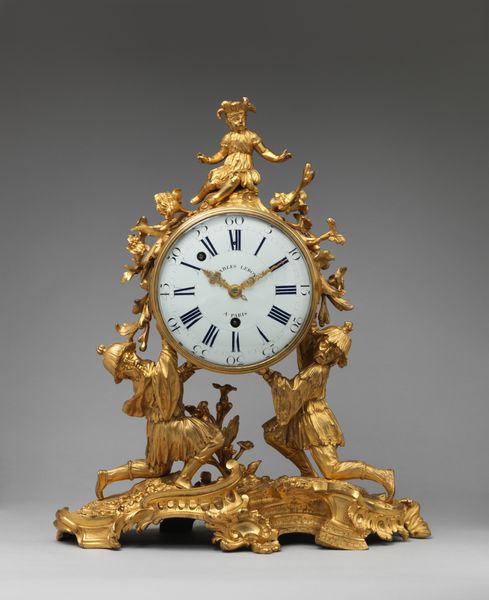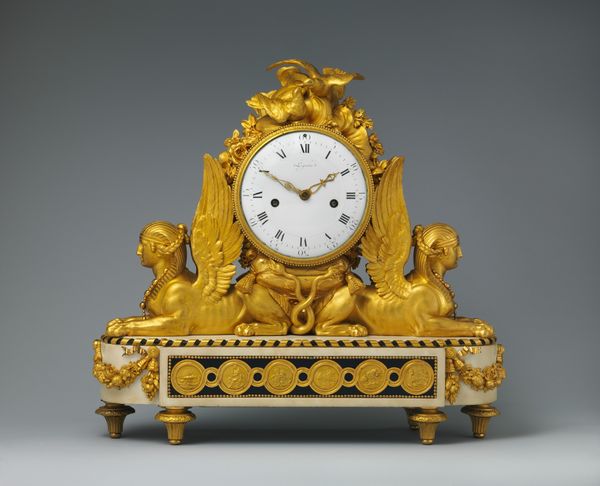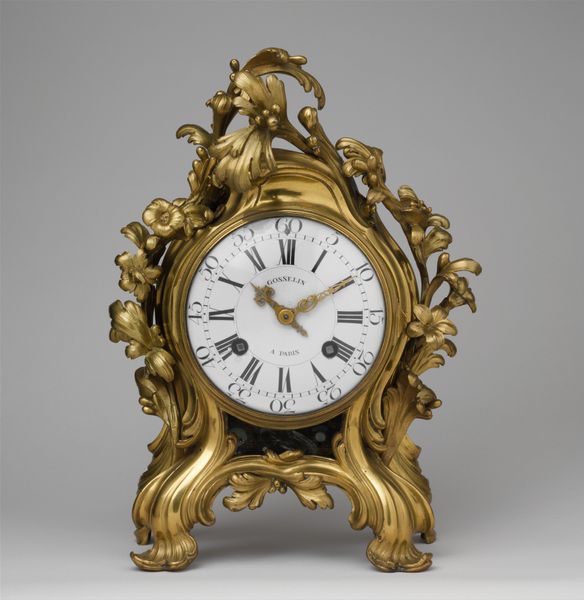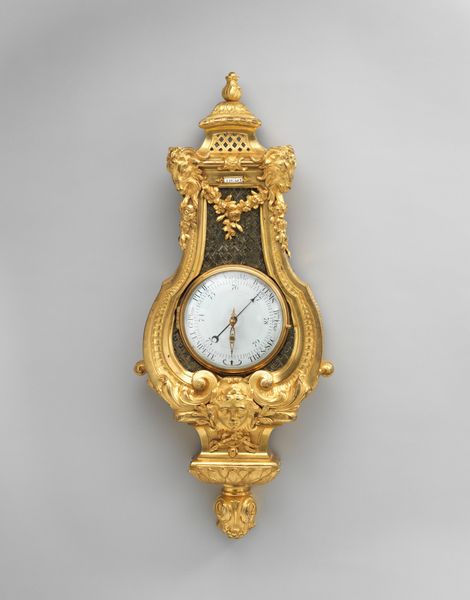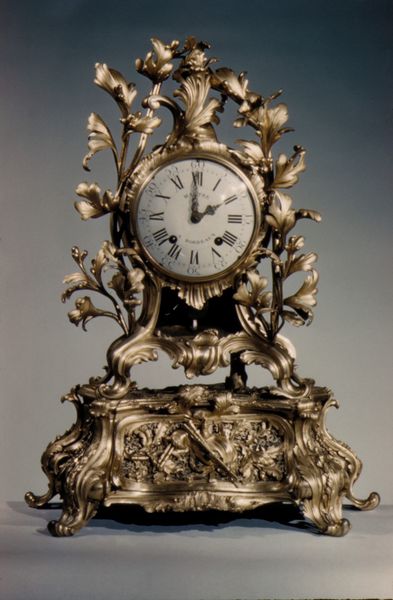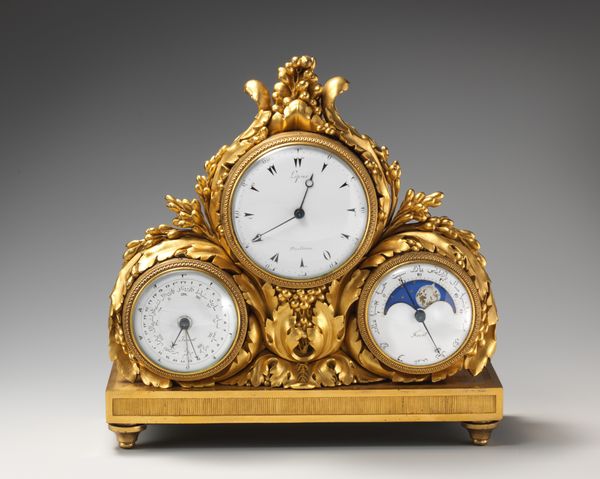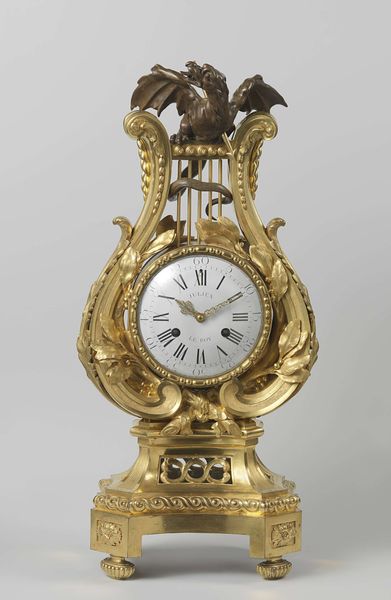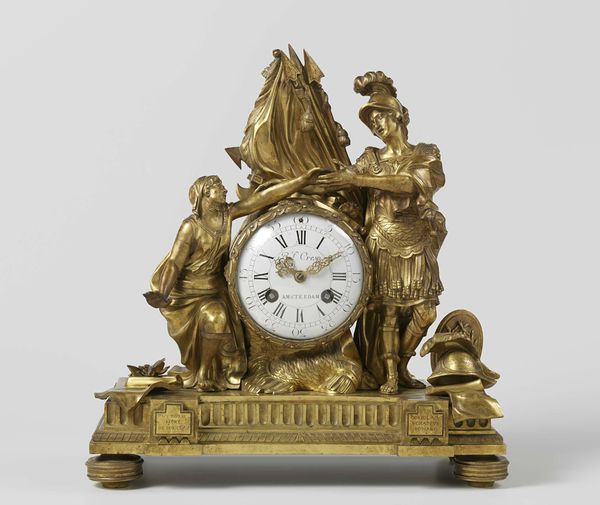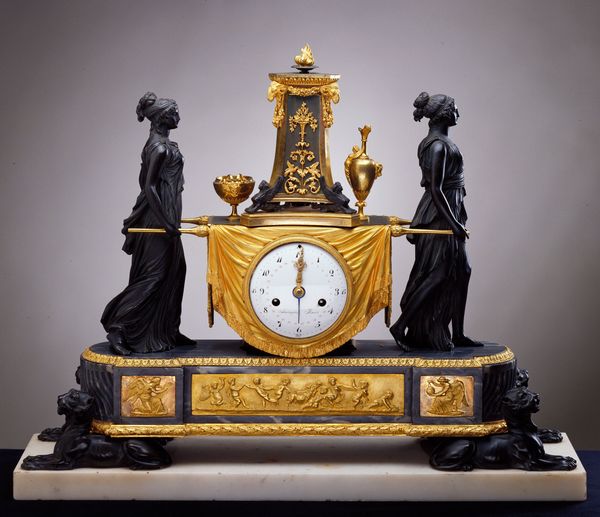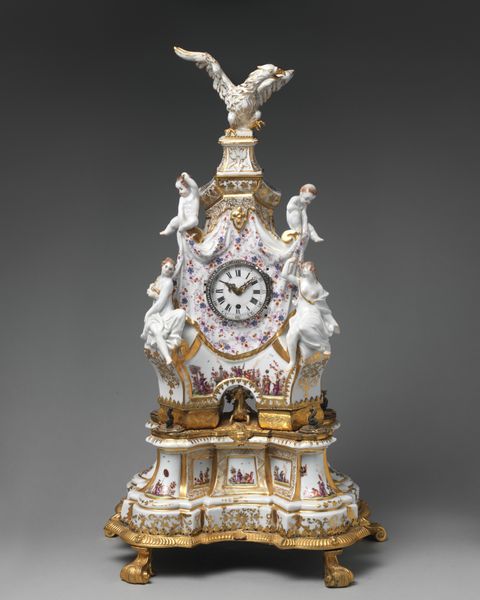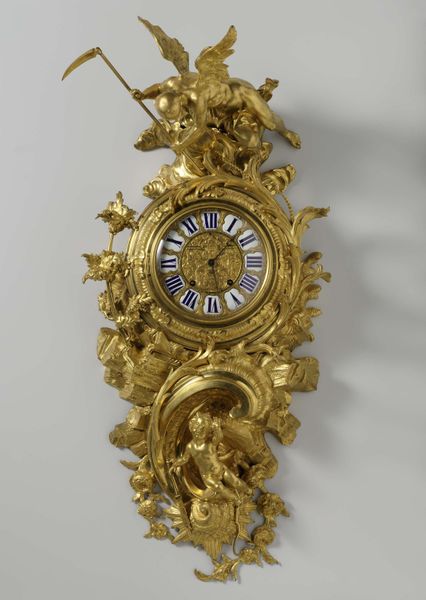
Dimensions: 12 x 6 in. (30.5 x 15.24 cm)
Copyright: Public Domain
Editor: We’re looking at a "Candlestick from a three-piece Clock Garniture," dating from around 1860. It's an anonymous French piece here at the Minneapolis Institute of Art. Brass and marble, so luxurious! I’m curious about what you see when you look at this object. Curator: Well, focusing on its materiality and process, the clock garniture presents a fascinating tension. The combination of brass and marble, both quarried and requiring skilled labor, speaks volumes. Editor: How so? Curator: Marble implies timelessness, permanence – think of classical sculpture. Brass, on the other hand, while durable, is more easily worked and suggestive of industry, production. Then consider that gilded brass finish— it speaks to aspiration and consumerism of the 19th century. What were these objects meant to signify for their owner? Editor: Status? Decoration? Was there something else? Curator: I believe the scale of production tells a part of the story. This was an era where the burgeoning middle class sought access to items formerly exclusive to the aristocracy. Think of the division of labor required, from the marble quarry to the brass foundry, the carving, the gilding…all the people involved. It begs the question: is this artwork really about the aesthetic, or about the socioeconomic structures that enabled its creation? Editor: That’s fascinating, how it’s not just a pretty thing, but evidence of so much more. Curator: Precisely. Examining the materials reveals the hands that shaped them and the societal currents that brought them together. It makes us rethink traditional notions of artistic value. Editor: I'll definitely be paying more attention to what things are made of from now on. Thanks!
Comments
No comments
Be the first to comment and join the conversation on the ultimate creative platform.
